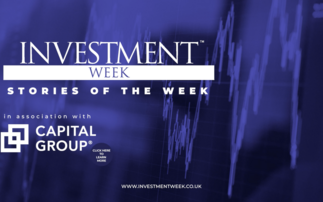A flexible, all-weather approach to credit investing has risen in popularity during the past decade. We look at how flexibility has helped credit investors capture income in a low-yield world and manage duration risk.
Open skies
Interest rates have started to head south again and investors are bracing themselves for another bout of late-cycle volatility. If the Federal Reserve continues to cut interest rates, the current cycle's peak - a mere 2.5% - will be the lowest in the history of the federal funds rate[1]. And while the injection of liquidity appears to have calmed markets, uncertainty about the length and outcome of the US-China trade war is likely to cause turbulence.
We think that a flexible approach can help investors access the most attractive parts of the credit spectrum in this low-yield environment. Investors can search credit classes and capital structures to invest in the most attractive instruments with conviction and establish defensive positions amid the constant threat of volatility.
The returns of flexible-credit funds have drivers across geographies, sectors and instruments, which allows investors to access an increasingly globalised credit market. In a world where the global stock of negative-yielding bonds stands at $17tn, investors need access to a variety of instruments to capture income.
Flexibility can also help investors achieve a level of downside protection during periods of instability and reduced liquidity. Unconstrained strategies can preserve capital by allocating to less risky parts of the market, or using defensive option-based strategies during sell-offs, enabling them to take advantage of opportunities when valuations inevitably become distressed.
Flexible strategies have been rewarded by superior risk-adjusted returns. The aggregate Sharpe ratio[2] of flexible bond funds is higher than that of government, corporate and high-yield bonds. A flexible approach also adds value more consistently. While high-yield funds have the potential to generate larger returns, flexible bond funds have made more frequent gains and delivered positive returns in a greater number of periods over the past decade (see figure 1).
Figure 1: Potential for a smoother journey
Source: Morningstar Direct, as at September 2019. Past performance is not a guide to future performance.
Storm clouds gathering?
Last year's sell-off prompted issuers to take creditor-friendly actions and cut dividends and sell assets. The dispersion of spreads among instruments has increased, and we see opportunities for active managers to seek alpha by distinguishing between lower-rated issuers and mid-quality companies that have taken steps to preserve capital. The outlook may be uncertain, but we think that a flexible approach will help investors identify and capture the opportunities that exist late in the cycle.
All-weather: our approach to flexible credit
At Hermes, we look for opportunities across the global credit spectrum, targeting attractive returns throughout market cycles while preserving capital. We believe that security selection is as important as finding the right company and search the capital structures of issuers for attractive instruments. Our large-cap bias helps us access better liquidity, while our persistent emphasis on downside protection means we are able to find opportunities when markets are fearful. There are four main aspects to our approach to credit investing.
The defining themes of Hermes' flexible approach to credit investing
Allocation
Unconstrained, global investing across credit sectors, industries, ratings and liquidity profiles throughout market cycles.
Conviction
Through high-conviction, relative-value security selection within the capital structures of issuers, we seek attractive income and capital returns in all market conditions. Proprietary ESG analysis and company engagement strengthen our views.
Downside protection
By preserving capital during market sell-offs, defensive options strategies also help to protect our ability to take risk when the opportunities are greatest. Dynamic management of rates and credit duration also aims to safeguard our portfolios.
True to mandate
Vigilant of our commitments and responsibilities to investors, we aim to prevent style drift and abide agreed risk parameters.
Through seasons and cycles
In these late-cycle conditions, a flexible approach to credit investing can help investors navigate - and benefit from - turbulence in order to generate attractive capital returns and income. And once this stage of the cycle has ended, these strategies can adapt to the next.
The value of investments and income from them may go down as well as up, and you may not get back the original amount invested.
For professional investors only.
This document does not constitute a solicitation or offer to any person to buy or sell any related securities, financial instruments or financial products. No action should be taken or omitted to be taken based on this document. Tax treatment depends on personal circumstances and may change. This document is not advice on legal, taxation or investment matters so investors must rely on their own examination of such matters or seek advice. Before making any investment (new or continuous), please consult a professional and/or investment adviser as to its suitability. Any opinions expressed may change. All figures, unless otherwise indicated, are sourced from Hermes.
The value of investments and income from them may go down as well as up, and you may not get back the original amount invested. Any investments overseas may be affected by currency exchange rates. Past performance is not a reliable indicator of future results and targets are not guaranteed.
The main entities operating under the brand "Hermes" or "Hermes Investment Management" are: Hermes Investment Management Limited ("HIML"); Hermes Fund Managers Ireland Limited ("HFM Ireland"); Hermes Alternative Investment Management Limited ("HAIML"); Hermes European Equities Limited ("HEEL"); Hermes Real Estate Investment Management Limited ("HREIML"); Hermes Equity Ownership Limited ("HEOS"); Hermes Stewardship North America Inc. ("HSNA"); Hermes GPE LLP ("Hermes GPE"); Hermes GPE (USA) Inc. ("Hermes GPE USA") and Hermes GPE (Singapore) Pte. Limited ("HGPE Singapore"). HIML, HAIML and HEEL are each authorised and regulated by the Financial Conduct Authority. HAIML and HIML carry out regulated activities associated with HREIML. HIML, HEEL, Hermes GPE and Hermes GPE USA are each a registered investment adviser with the United States Securities and Exchange Commission ("SEC"). HGPE Singapore is regulated by the Monetary Authority of Singapore. HFM Ireland is authorised and regulated by the Central Bank of Ireland. HREIML, HEOS and HSNA are unregulated and do not engage in regulated activity.
Issued and approved by Hermes Investment Management Limited which is authorised and regulated by the Financial Conduct Authority. Registered address: Sixth Floor, 150 Cheapside, London EC2V 6ET. Telephone calls will be recorded for training and monitoring purposes. Potential investors in the United Kingdom are advised that compensation may not be available under the United Kingdom Financial Services Compensation Scheme.
[1] The federal funds rate was introduced in 1954.
[2] A measure of excess return per unit of volatility











